As the coronation at Westminster Abbey on the 6th of May fast approaches, Typhoon jets have been spotted conducting training exercises over the North Sea in preparation for the event.
An eye-catching image reveals a large number of Typhoon jets engaged in a formation flight.
Following the coronation ceremony, the Royal Family will return to Buckingham Palace to conclude the day’s festivities by watching a flypast from the balcony. The Typhoon jets, renowned for their agility and performance, are expected to be part of the spectacular aerial display.
As the coronation at Westminster Abbey on the 6th of May fast approaches, Typhoon jets have been spotted conducting training exercises over the North Sea in preparation for the event. pic.twitter.com/8OZjXRsnFi
— George Allison (@geoallison) April 19, 2023
The flypast will necessitate airspace restrictions in areas surrounding the North Sea, East Anglia, Essex, and London, to enable the aircraft to fly over Buckingham Palace. Following the event, the dispersal will take place to the south and west of the London Control Zone, covering Surrey, Berkshire, Buckinghamshire, Oxfordshire, Gloucestershire, and Wiltshire.
Although the participation of Typhoon jets seems likely, the complete lineup of aircraft for the flyover has not yet been confirmed.



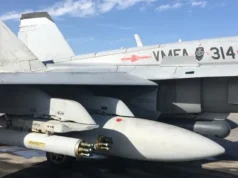

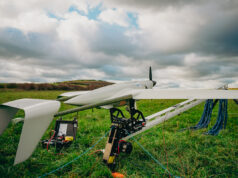
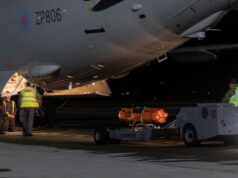

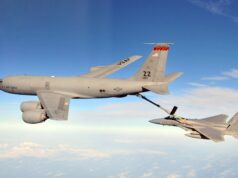
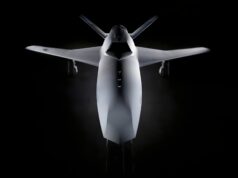

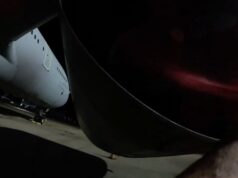
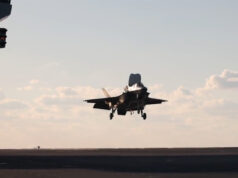

22 Typhoons in total are part of the flypast 👍
The last big flyover was the Jubilee last year I recall? Will take some going to beat that. Saw the helis from our house in Surrey, the jets dispersed further north.
Nice one. Think this will be pretty big. 70+ aircraft.
Where’s Esteban to tell us it’s a sign of weakness 😂😂😂😂
😄 Ha, yeah. What a whopper that lad is.
Except where it matters, down below 😉
😄👍
Only 22 in the flyby that’s pathetic…a third world nation could do better…cannot even get a formation of fifth generation aircraft…pathetic weakness….Belgium could do better.
Our 5th gen jets are stealthy, so they could be there but cloaked….
Like Klingon Birds of Prey ?
😉
That’s the issue the RAF should be purchasing advanced starships that have photon torpedoes and shields that can resist any 21c weapon system…see practically a third world airforce…what happens if Russia sends a Bird of Prey to test out airspace….
I know your joking but when you take a step back and think about it, it’s actually quiet impressive that they managed 22. That’s over a 5th of the total fleet being flyable at one time, and way more than have been deployed at the same time in any of the recent wars. I am guessing maintance etc operations have been carefully aligned to ensure that 22 plus a few spares are available. I would assume this will need it be on top of the ones deployed for QAR/Falklands/NATO etc, meaning probably closer to half the total fleet deployed at once.
I wonder what the equiv percentage would equate to for the US. Guessing 500 odd. Which would be stupid to use in a flyby but would be an impressive sight.
Written as only a negativist could. Are you a EUphile too?
J was being sarcastic. 😀
He’s taking the piss out of somebody else who would say something like that.
It was a joke..I was channelling Esteban..and did a bleeding good job of I say so myself
Passed me by, but pleased you were not serious.
He is currently busy doing the laundry for 2 Para….
😆
Better employed by 3 PARA mortars.
He’s squared them away last week, he is currently on his new job, Company laundry duties, next stop RAF Reg panties…..
Not sure how he’ll cope with his final duty and Royal’s dresses and naked beach fighting…. under the moon light..
He wont have a choice….but he already is able to bring his own dresses!
😂🤣🤣👍
😅😆
Good Morning Daniele-I hope you are well. We are really looking forward to the Coronation over here and we will fly the Union Jack from our home and business-might even have an Ale or two as well to drink to the King’s health!😀 I hope the Typhoon formation as above is not the final product-looks a little messy as is😄
They might flying in the formation of the Kings monogram ‘CR’.
Oh-never thought of that-what a silly bunt!(Note-this Monty Python stuff is not my fault-blame lies with all the tipsy hooligans on the Glasgow bomb article)
Explosive news, next up “can a night out in Glasgow and eating a curry on the way home really equal 2lbs of C4 on the toilet?”.
Howsit MS! 😂
I haven’t looked at that article yet. But I could well imagine 😄
Morning geoff! Yes, thank you. Likewise, the flag will be proudly on display. We’ll probably be the only ones, sadly.
Morning Geoff, hope you’re well Mate.
Howsit Klonkie. All good and hope you are as well. It’s 3am here- the cat woke me so I am doing what Dale Carnegie recommended-if you are left with a lemon, make lemonade so on my PC checking mail etc.. I am sure there will be some Kiwis in the Kings parade so looking forward to seeing the whole show!
Cheers for now
Good one Geoff!
‘A large number’ modern life has a real downer on what words mean. I would have expected several formations of such but then the RAF have few jets anyway. Perhaps they could borrow a few from our Allies to make up some numbers? Do we the taxpayer really get value for money with our defence budget? Answer – NO Will the Reds make it in their vintage jets?
Have a read of this
https://www.defense-aerospace.com/pac-questions-whether-uk-can-afford-its-military-equipment-plan/?utm_source=mailpoet&utm_medium=email&utm_campaign=les-newslettertotal-derniers-articles-de-notre-blog-11
The Ministry of Defence’s (the Department’s) approach to its Equipment Plan has failed to adapt to a more volatile world. The invasion of Ukraine has challenged strategic
assumptions and necessitated a refresh of the 2021 Integrated Review. However, we have serious doubts about whether the Department’s Equipment Plan process is agile
and responsive enough to react to this more dangerous international situation.
We are concerned that the Department lacks the urgency required to develop and deliver promptly the enhanced capabilities that the Armed Forces need. The Department acknowledges that its land forces must catch up to fulfil our NATO commitments, but programmes to achieve this, such as Ajax and Morpheus, have been beset by problems and delays for many years. The Department has also not focussed sufficiently on developing the enabling and supporting capabilities required in operational environments. If the Department does not act swiftly to address the fragility of its supply chain, replenish its stocks, and modernise its capabilities, there is a risk that the UK might struggle to maintain its essential contribution to NATO. This is compounded as the 2022–2023 Equipment Plan is already somewhat out of date, as it does not yet reflect the emerging lessons from Ukraine.
The Department assesses its Equipment Plan as affordable over the next ten years, but this assessment is still characterised by optimism bias. It relies on the Equipment Plan budget exceeding forecast costs by £5.2 billion in the Plan’s final three years, to rectify a forecast deficit of £2.6 billion in the first seven years. The Department’s assessment of the Plan’s affordability also assumes it will reduce project costs by £30.4 billion during the next ten years. This includes the Department achieving all planned efficiencies and savings, although it does not yet have plans for £1.6 billion cost reductions and £3.4 billion efficiency savings, of which it needs more than £2 billion in the next three years.
We are also concerned that the Department has not yet secured the skills it needs to deliver the Plan, particularly given the impact of rising inflation on staff recruitment and retention.
The Committee examines the Equipment Plan every year and sees the same problems recurring with major, often multi billion pound, defence procurement programmes.
Equipment arrives into service many years late and significantly over-budget, with depressing regularity. Neither taxpayers nor our Armed Forces are being served well.
There needs to be meaningful change of this broken system. The Department needs to break from this cycle of costly delay and failure and deliver a fundamental, root and
branch reform of defence procurement once And for all
The Mod plan on assumed efficiencies all the time, and it always fails.
Nothing has changed and I doubt under a new gov things will be any better.
It’s so stupid. They seem to go for a few really big expensive unique programs where they probably aren’t needed.
I mean this Morpheus thing, why is it costing so much and delayed? Can’t they just use what’s already available in the civilian world with a few modifications?
I won’t mention the A word but it really looks like a modular vehicle would of been best to replace IFV, bulldog, CVRT etc. If it could work like that.
It’s going to be 22 Typhoons. 6 F35B ‘s, plus the 9 Reds. And 34 other aircraft and helicopters.
Exiting stuff Robert, it’s going to be a grand day!
It sure will. Its what we do best.
well we can be confident that they are more competent that the Russian Airforce when flying over their own cities…one of their planes just did a whoops and accidentally dropped a bomb on one of their own cities…no wonder the Russian airforce has pretty much stayed home.